BY MICHAEL SHANK
COMMUNICATIONS DIRECTOR, CARBON NEUTRAL CITIES ALLIANCE
Why 12 Ms?
Environmentalists have long depended on good data and sound science to determine the direction of their advocacy agendas. Climate change campaigns are an excellent example of this. They’re reliant on rigorous modeling, and the science-based estimates and forecasting that follow, to substantiate and legitimate any advocacy effort.
This strategy makes much sense. When advocating for a low-carbon agenda, to prevent further warming of the planet, it’s essential to have solid data on how much carbon is left in our budget (i.e. how much carbon we can still spend or use). Without good data, for example, “2 Degrees Celsius” has little meaning. Thanks to our scientific community, however, we know now that warming above this temperature limit, from pre-industrial levels, would make life inhospitable and eventually uninhabitable.
Here’s where some environmentalists often stop short, however, thinking that the data alone will win the day in transforming the hearts and minds. In fact, there’s been an over-reliance on data in advocacy work, ignoring the myriad ways in which people absorb information, transform thought and self-motivate action. A better approach, especially in a “post-fact world” where science is readily dismissed by some federal governments, would be to mimic the model of a political campaign and to remain in campaign mode for the immediate future.
There are a dozen ways in which the climate community could more effectively amplify its message and improve upon its ability to motivate Americans to act. A dozen ways, as this article shows, to move away from data dependence and toward concerted campaigning. These twelve tacks, if taken in total, can move us closer to climate coherence, where attitudes (in which the majority believes climate change is happening) align with behaviors (in which the majority is doing something about it). Currently, there’s little coherence. Climate attitudes are strong, while climate behaviors are weak. These twelves tips, then, taken together, are, at minimum, a must-try. The days of defaulting to data only are over. Let’s begin.
 #1 Messages
#1 Messages
There’s too often the assumption that the environmental message (e.g. the seas are rising rapidly and polar bears are imperiled) carries the strongest weight and that there’s inherent impact on the publics when using an ecological frame. The same mistaken assumption applies to messaging with moral overtones, as if there’s an implicit ethical agreement with the audience. Similarly, appeals on the heels of a humanitarian disaster assume some semblance of collective compassion in response. Yet, these are not always the most reliable messages. Not everyone considers themselves an environmentalist. Not everyone operates from a moral framework. And not everyone is so quick to be compassionate, especially when isolationism is trending.
What often reaches the most people are economic, health, security and quality of life messages. And when it comes to climate, we have many. We know how devastating climate change and its causes are to the economy; as an example, governments spend over $5 trillion dollars annually on direct and indirect fossil fuel subsidies. We know that free energy – the sun and the wind – brings a formidable return on investment ($10 trillion every year by 2050, with a $19 trillion boost to the world GDP). We know that fossil fuels are killing us, with 7 million people dying prematurely every year due to air pollution. And we know that climate change is a serious security risk and threat multiplier, a matter on which the rich world’s defense ministries agree, imperiling people everywhere due to droughts, rising sea levels, heat waves and hurricanes. And all of this affects quality of life.
This is what most people care about – their pocketbook, their health, their own mortality and, more generally, their quality of life. It’s a selfish sensibility but it’s a dependable one, versus the expectation that an audience will be compassionate enough to care about the environment or anyone else. Messaging, thus, should prioritize economic, health, security and quality of life frames. It’s what resonates.
 #2 Messengers
#2 Messengers
When it comes to climate messengers, we desperately need more diverse and charismatic ones. While this is changing slowly but surely, we don’t need more white men on the front lines of the movement. While a few well-placed white men have done much to move the ball forward on climate campaigns, for example, it’s time for them to step back from the spotlight and support others stepping up. The ‘look and feel’ of the environmental movement isn’t always looking and feeling like the whole of society. But it must if we want the majority to come on board the movement.
There’s also a tendency among some subnational actors to go it alone, forgoing the opportunity to rally messengers, or surrogates, on behalf of the message (remember, we’re in political campaign mode). This happens either because city and state officials don’t have the time to recruit surrogates, and offer some much-needed surround sound, or because they’re not automatically thinking and operating as if they’re in political campaign mode. Regardless, it’s essential to approach every climate project with surrogates on standby – from the business, financial, labor, health and security communities – ready to rally.
 #3 Mainstream Majority
#3 Mainstream Majority
When communicating with the mainstream majority, it’s time to let go of the ego that often drives esoteric talk. It’s time to use the lingo that most people use. There is absolutely no need to be grandiloquent in our descriptions of global heating or the technological solutions needed to solve it. We do a serious disservice to the climate movement when we do so. If you look at the most often used words on Facebook, for example, they’re overwhelmingly monosyllabic. The onus is on us, then, within in the climate community, to meet the mainstream majority where they’re at.
We must become adept at the art of translation. Every time we engage the public, we need to be our checking multisyllabic meanderings at the door and speak clearly and succinctly. If we fail to bring along the publics, and fail to use their frames and phrases, then national policy, under new and unfriendly leadership, too often runs ram shod over past progress. Lock in public attitudes, engaging them with their frames and their phrases, and you lock in the policy.
 #4 Mass Media
#4 Mass Media
Egocentric tendencies also abound when it comes to working with the media. Many climate advocates want to work only with elite media outlets. This is not uncommon. In the western press, for example, the New York Times or Financial Times gets held up as the gold standard for opinion publishing and anything less is unsuitable. Too many advocates aim for elite newspapers and ignore the papers with mass distribution to the moderate middle and what’s frequently read by the mainstream majority, including what might be considered tabloid. This is a serious oversight. We need to be in the newspapers that are getting read in the diners and hotels across our countries, as well as the local community papers, because that is what people are reading. The same goes with local television and radio as well. Follow the viewership. If we really want to reach the masses, we must be in their media.
 #5 Me
#5 Me
Now we are getting into some less frequently tread but equally important frontiers. When it comes to our individual role in any of this climate messaging, it’s critical to walk the talk when leading publicly. The public wants to see consistency in our communication if they’re going to do as we do, say as we say, talk as we talk. Any shortfall, no matter how small, is picked up, torn apart and fed to the media critics. That means throughout our climate advocacy efforts, we’re choosing low-carbon lifestyles.
That means that we’re using mass transit, choosing a plant-based diet, opting for sustainable and organic fashion, flying less, powering and heating our houses with renewable energy and more. Do this and our message sticks. We shield ourselves from the kind of criticism that befalls other highly public climate leaders when their houses are too big, their cars are too heavy emitting, their plane travel is too extensive, etc. Fail to fully confront a sustainable walk and it’ll bite us, as the audience is often ready to pounce and poke holes in any climate action agenda. Let’s make sure we don’t give them any more motivation or material.
 #6 Memes
#6 Memes
This is an easy one. Make sure that any climate message coming out of our cities is made into a meme for sharing on social media. It may take a minute, but it’s a must. If we can’t translate a meaty message for the myriad social media vehicles out there, we haven’t tried hard enough. Everything and anything can be ‘meme-ified’. And if you’re getting stuck on this M assignment, or don’t know what a meme is, simply ask your in-house millennial or check out the examples here. This is helpful practice in learning to distill a complex message into a basic concept, something hashtag-able. And it’ll undoubtedly help us in other aspects of our communication, too. So, #TryIt.
 #7 Moments
#7 Moments
This is an obvious one but it’s too often overlooked. As a climate communicating community, we need to do better at tracking the news cycle, seizing the press moment, weighing in when an issue is trending, and responding within the hour/day to a news item. When we wait, the better-staffed and better-funded fossil fuel lobby, and its paid deniers, comment in our absence. Cities need to be able to pivot quickly with a quote or comment if we want to be a part of the story. We can’t wait until tomorrow or next week to weigh in, nor can we afford to let bureaucratic political protocol get in the way of our ability to effect meaningful change. Seizing the press moment may mean circumventing the scheduled status quo. It’s time for the unconventional, or as Al Gore put it in his latest film, it’s time to #BeInconvenient. And that may mean acting immediately, even if it inconveniences our day, dinner or other predetermined endeavor.
 #8 Movement-Building
#8 Movement-Building
This point concerns the many alliances and compacts and networks out there working on climate change. There are many. The real question is how to best make use of their collective bargaining power. Imagine the might mustered if all subnational groups out there came together under one effort, one campaign, one language. By coordinating communications, the climate threat could be well-emblazoned on the brains of the public citizenry. Frankly, any coordination would be an improvement. Imagine a monthly drumbeat of memes coming out of the climate community. One month could be all about sustainable diets, another month about zero waste, another month about sustainable fashion. Focusing the world’s attention on one action, using the momentum of the entire subnational climate community (since that’s one we have more control over), and building a monthly momentum, using social media and messaging campaigns to support that action. The impact could be mighty.
People want to be part of a movement, as we’ve seen with the student movement globally. It’s attractive. They don’t want to go it alone when it comes to climate action. So, let’s give them a movement. Let them know they’re not alone.
 #9 Multiples
#9 Multiples
Repeat, repeat, repeat. And then repeat some more, especially with climate science and climate action. Keep it simple, then drumbeat the heck out of it. It may seem elementary, but it’s the very thing that’ll create a connection for the consumer, constituent or costumer. There’s lots to be done on the climate front, almost too much for most people. So, to avoid overwhelm or anxiety, keep the ask clear, concise and constantly reiterated. People need to hear it a half-dozen times from the messenger before it starts to sink in. Don’t be afraid of repeating. We do this all the time when it comes to other threats, such as terrorism. We shouldn’t be afraid to do this with our climate campaigns. It should be in every speech, every press event, every action taken, and every campaign.
 #10 Mirroring
#10 Mirroring
Find ways to reflect back what your community is doing – on your website, in your communication materials, in your speeches – so that they feel affirmed and featured in their climate action and so that they don’t feel alone while doing it (to our movement point earlier). Build out a page on your website that solely features – using pictures, video, testimonials – the incredible climate action and activities that your community members are taking and doing. Feature a citizen of the week or month and provide positive accolades online and in print material and speeches so that they feel affirmed and validated for doing the right thing. The more they see themselves valued by the city, the more people will want to do the work and reap the same positive reward.
 #11 Magic
#11 Magic
The art of distraction. It is what magicians do all the time. And it is what GEICO, an insurance company based in the U.S., does brilliantly in its commercials (watch some here). Much of a GEICO ad spot’s air time isn’t spent selling insurance, it’s spent entertaining and distracting the viewer. Only at the end does the ad make the ask clear. Climate advocates could take a lesson from what’s trending in the advertising space. Too often we lead with the ask, the sale, without first entertaining the viewer with a little magic, a little fun. The public wants to enjoy the experience so let’s give them something to enjoy. We don’t have to always lead with what’s serious and substantive. We can tap into the sarcastic and sardonic, and even sexy, to sell our climate wares. In fact, we need to. That’s what people are looking for.
 #12 Mimicry
#12 Mimicry
Now, for our last M. A final check on our campaign before launching. The ultimate litmus test for any outreach campaign should be “how would I or my friends or family respond?” to such a campaign. What we, ourselves, like on Twitter, Facebook or Instagram, for example, and what the public tends to like, should guide our communications work. Too often we pursue and plan press work that fits a prescribed mold – i.e. what’s been done in the past and what we think we should do – yet it often fails to resonate with the public. If we honestly vet any outreach plan using our own lens (i.e. would we attend such a conference or call to action?), we’ll come a lot closer to efficacy. By mimicking what and how the masses communicate and activate, we make clearer the clarion call for climate action because it’s in a language that they’re already using and understanding.
More Ms…
There are many more Ms out there, to be sure. Hopefully, while reading this, another M came to mind that was missed above. Like “Metrics” for measuring progress, or “Money” for making progress possible – both equally vital to a campaign’s success.
There’s a 13th M that I’ve discussed before. I’ve talked about “Meet-Ups” to encourage cities to meet with reporters and build relationships with the press. Ultimately, all of this above rests on relationships. That’s especially true when it comes to working with the press. A reporter is much more inclined to run with a story if there’s some pre-text, some history, before the press pitch. Subnational leaders, and mayors especially, should be sitting down with the climate reporters and overviewing their city’s emissions and waste reduction strategies, not shying away from identifying the challenges as part of that process.
We need to be a lot more honest and transparent with public storytelling regarding what’s working and what’s not working. There is a tendency among some subnational leaders to wait until a project or product is perfect before going to the press. But that often prevents or precludes the opportunity for reporters to be a part of the process and to translate that process for the public. Meeting up regularly, for coffee or lunch, will help bridge this gap and reframe reporters as allies not antagonists (as some leaders view them) in this work.
But these 12 Ms above will get us started and get us a little closer to capturing the attention of the publics that we’re trying to motivate and mobilize. If every climate campaign going forward integrates at least half of the ideas above, we’ll see a stronger environmental movement emerge. One that tracks closely to what the publics find compelling and one that finds itself more powerful among policymakers and the press. This is all very doable. None of the Ms are out of reach, even for cashless campaigns. All 12 Ms are manageable. Now it’s time to move on them.
![]() The GasTerug effort has one team devoted to offices, another team for neighborhoods, and teams for companies and healthcare institutions, data monitoring, campaigning, and sharing knowledge.
The GasTerug effort has one team devoted to offices, another team for neighborhoods, and teams for companies and healthcare institutions, data monitoring, campaigning, and sharing knowledge.

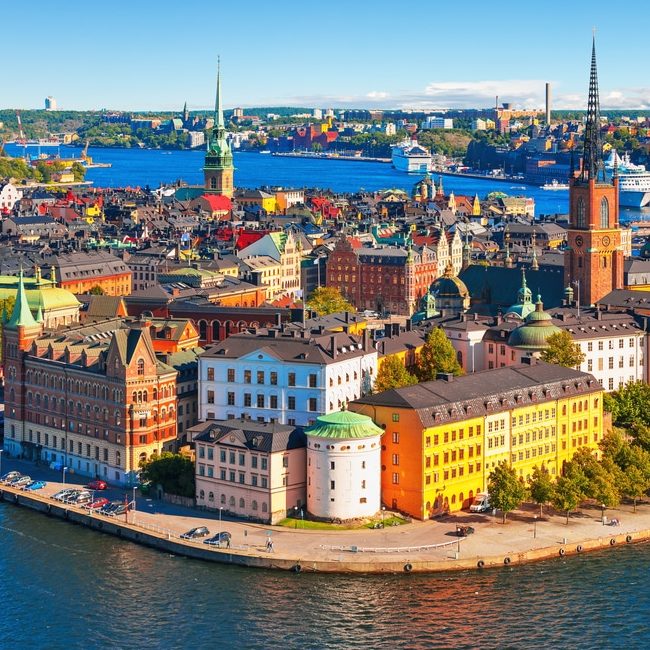
 “To set the buildings and construction sector on track to meet the Paris Agreement goals, we need to understand the built environment as a system in which all actors have a role and responsibility to reduce emissions across the full life cycle of built assets,” said Roland Hunziker, Director, Sustainable Buildings & Cities at WBCSD. “Each actor, from material manufacturers to construction companies, architects, developers, investors, owners and end-users, can act in concertation with others. Carbon performance needs to become an integral part of the assessment during every transaction all along the value chain and cities are uniquely placed to demand this and integrate carbon performance into procurement and regulations.”
“To set the buildings and construction sector on track to meet the Paris Agreement goals, we need to understand the built environment as a system in which all actors have a role and responsibility to reduce emissions across the full life cycle of built assets,” said Roland Hunziker, Director, Sustainable Buildings & Cities at WBCSD. “Each actor, from material manufacturers to construction companies, architects, developers, investors, owners and end-users, can act in concertation with others. Carbon performance needs to become an integral part of the assessment during every transaction all along the value chain and cities are uniquely placed to demand this and integrate carbon performance into procurement and regulations.” #1 Messages
#1 Messages #2 Messengers
#2 Messengers #3 Mainstream Majority
#3 Mainstream Majority #4 Mass Media
#4 Mass Media #5 Me
#5 Me #6 Memes
#6 Memes #7 Moments
#7 Moments #8 Movement-Building
#8 Movement-Building #9 Multiples
#9 Multiples #10 Mirroring
#10 Mirroring #11 Magic
#11 Magic #12 Mimicry
#12 Mimicry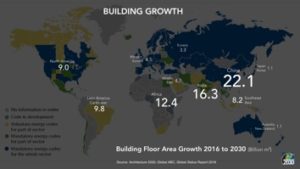
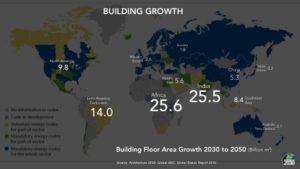 Coupled with the urgency that the IPCC has placed on the decarbonization of our built environment (both existing and new buildings) over the next decade, it is clear that all building sector actions and policies must be evaluated based on their ability to scale and to have a significant immediate impact on greenhouse gas emissions reductions.
Coupled with the urgency that the IPCC has placed on the decarbonization of our built environment (both existing and new buildings) over the next decade, it is clear that all building sector actions and policies must be evaluated based on their ability to scale and to have a significant immediate impact on greenhouse gas emissions reductions.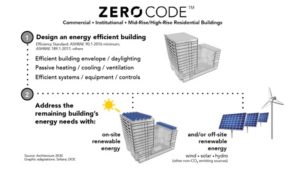 Two critical questions that address the scalability and ability of such standards to have significant immediate impact are: 1) how do we define “highly efficient”, and 2) how do we ensure that the energy a building uses comes from “renewable energy sources”? This e-news highlights efforts to answer these questions.
Two critical questions that address the scalability and ability of such standards to have significant immediate impact are: 1) how do we define “highly efficient”, and 2) how do we ensure that the energy a building uses comes from “renewable energy sources”? This e-news highlights efforts to answer these questions.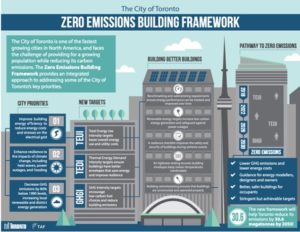
 To ensure scalability, zero-net-carbon building energy codes and standards must focus equally on prescriptive and performance code pathways (see figure on left), as the large majority of new buildings around the globe are expected to follow a prescriptive path.
To ensure scalability, zero-net-carbon building energy codes and standards must focus equally on prescriptive and performance code pathways (see figure on left), as the large majority of new buildings around the globe are expected to follow a prescriptive path.